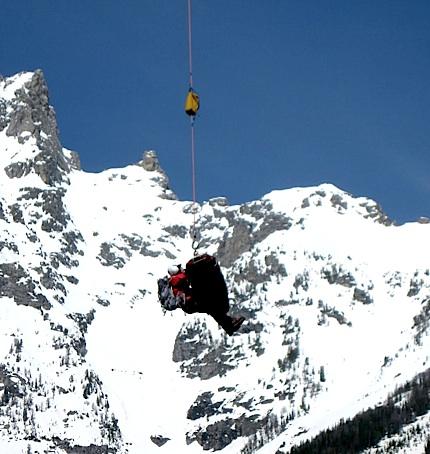A Jackson, Wyoming, man managed to survive a tumbling 2,000-foot fall in Grand Teton National Park, where he and two partners planned to summit Teewinot Mountain and then ski down its east face.
Park officials say Jesse Stover, 39, and his friends set out about 4 a.m. Saturday for the summit. About four-and-a-half hours later, and just about 500 feet from the summit, however, he slipped and fell about 2,000 feet, they said.
Mr. Stover and his friends were well-equipped with helmets, ice axes, and crampons, according to park officials, and were wearing avalanche beacons at the time of the accident.
TCSAR’s rescue team reached Mr. Stover at 11:36 a.m. and prepared him for a short-haul evacuation to the valley floor at Lupine Meadows, where a park ambulance then transported the injured man to
St. John’s Medical Center in Jackson for further treatment, the park statement said. Park officials did not describe the man's injuries.
While attending to Mr. Stover on Teewinot, TCSAR members and Grand Teton rangers avoided a small wet avalanche that came down the gully where the man was located.




Add comment